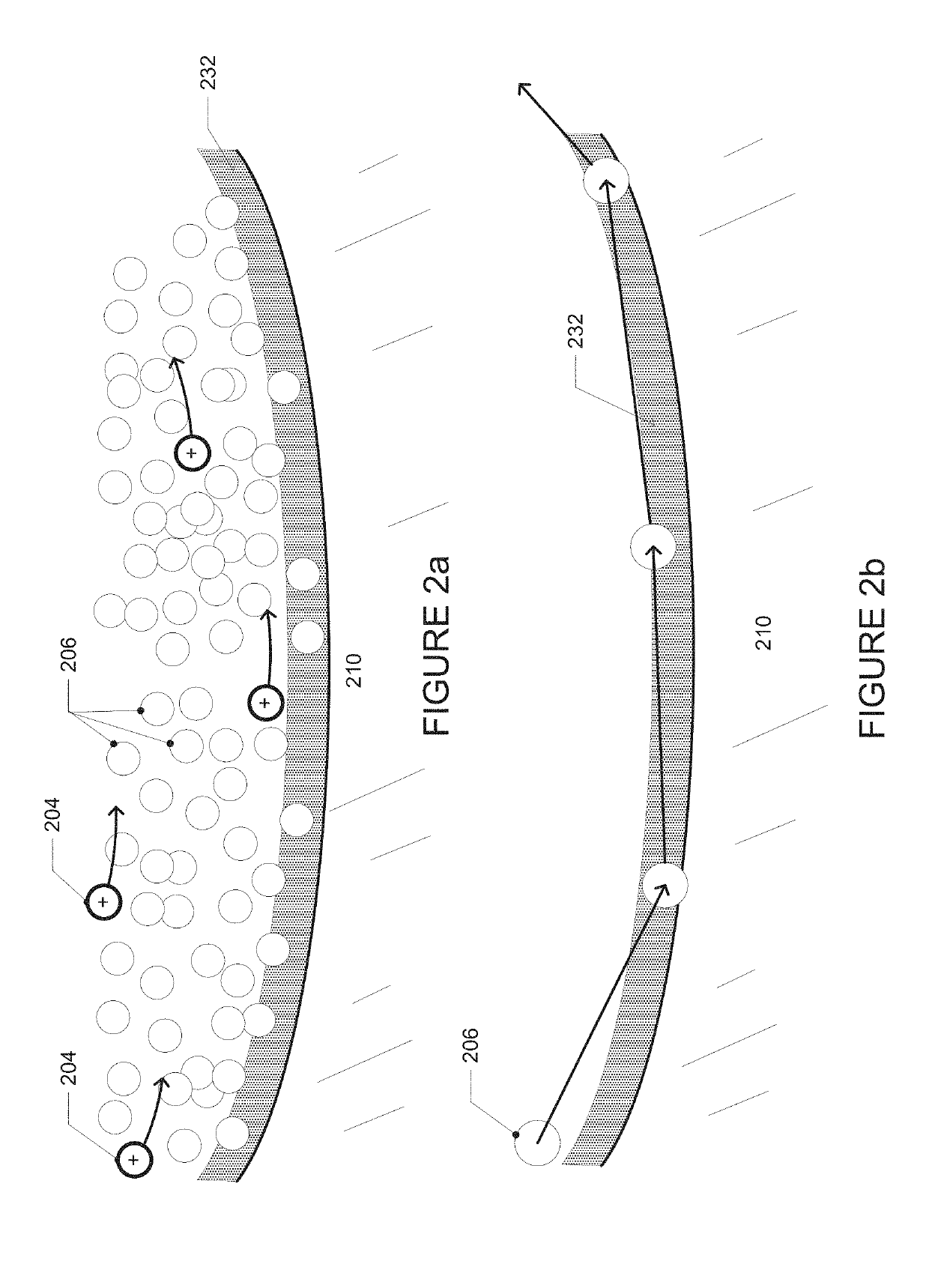Reactor using electrical and magnetic fields
a technology of electrical and magnetic fields and reactors, applied in nuclear reactors, climate sustainability, nuclear energy generation, etc., can solve the problems of many obstacles to making it a viable energy source, cost increase, and extraordinary difficulty
- Summary
- Abstract
- Description
- Claims
- Application Information
AI Technical Summary
Benefits of technology
Problems solved by technology
Method used
Image
Examples
first embodiment
[0159]FIGS. 10a-d depict a first embodiment in which an axial magnetic field is applied by an electromagnet such as a superconducting magnet. FIG. 10a shows an isometric view of a superconducting magnet that surrounds the outer electrode of the reactor. As depicted, the magnet includes an enclosure 1056. FIG. 10b provides the same perspective as FIG. 10a, with the enclosure 1056 of the superconducting magnet removed revealing the superconductive coil windings 1054. FIG. 10c provides a perspective of the reactor as viewed along the z-axis and FIG. 10d is an isometric section view corresponding to the section lines, A-A, shown in FIG. 10c. As shown, the reactor has outer electrode 1010, inner electrode 1020, and a gap 10 that defines the annular space 1040 between the two electrodes. An electrical current (as depicted by arrows in FIG. 10a) passes through superconductive coil windings 1054 that wrap around the reactor, creating an applied magnetic field that is substantially in the z-...
examples
[0244]The following non-limiting examples represent a few embodiments that may be practiced in accordance with the broader principles described herein.
1.) Negative Electrode (Outer Electrode)
[0245]The outer electrode, sometimes called the “shroud” includes a cylindrical metal ring with multiple points of attachment for the lanthanum hexaboride or other target material. The composition of the shroud is typically a refractory metal, such as tantalum (Ta) or tungsten (W), due to the high thermal resistance of refractory metals; however, certain embodiments of the reactor use lower temperature metals such as Alloy 316 Stainless Steel. These embodiments may include a liquid cooling circuit that prevents the shroud from reaching the critical melting temperature of the composition metal. As explained, the outer electrode may be either the more negative or the more positive electrode.
Electrical Conductivity
[0246]The plasma in the reactor is struck between the positive electrode and the nega...
PUM
 Login to View More
Login to View More Abstract
Description
Claims
Application Information
 Login to View More
Login to View More - R&D
- Intellectual Property
- Life Sciences
- Materials
- Tech Scout
- Unparalleled Data Quality
- Higher Quality Content
- 60% Fewer Hallucinations
Browse by: Latest US Patents, China's latest patents, Technical Efficacy Thesaurus, Application Domain, Technology Topic, Popular Technical Reports.
© 2025 PatSnap. All rights reserved.Legal|Privacy policy|Modern Slavery Act Transparency Statement|Sitemap|About US| Contact US: help@patsnap.com



